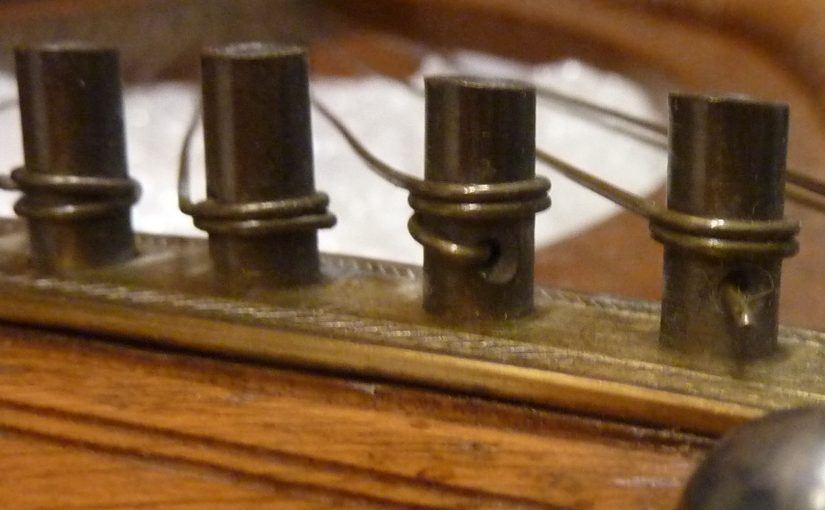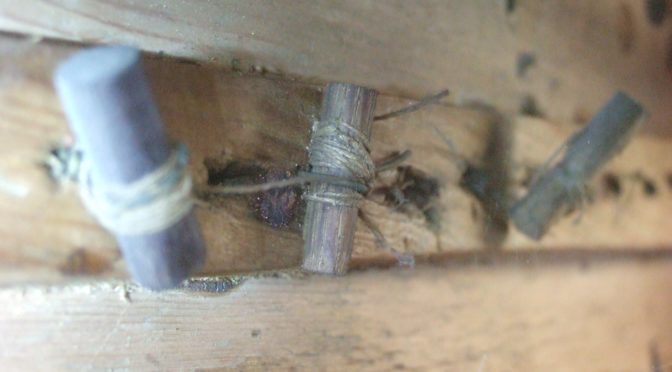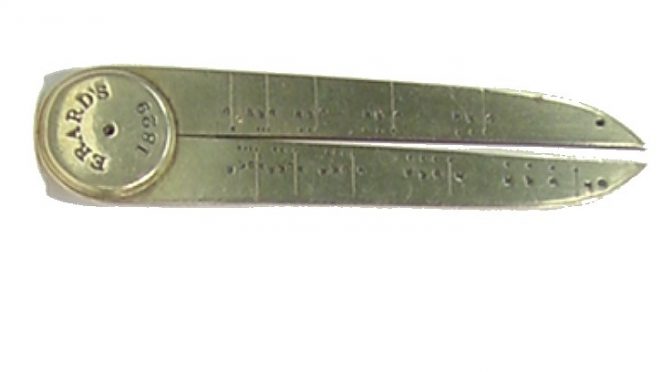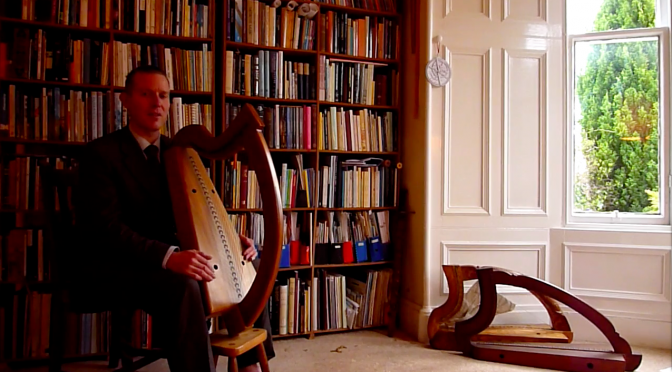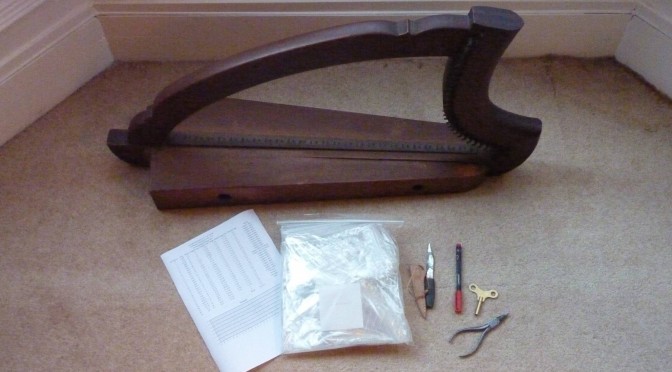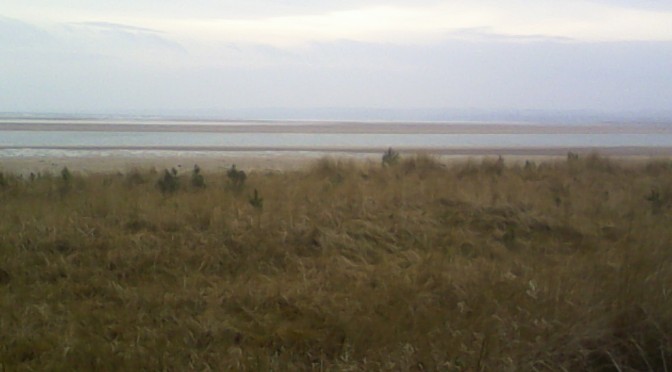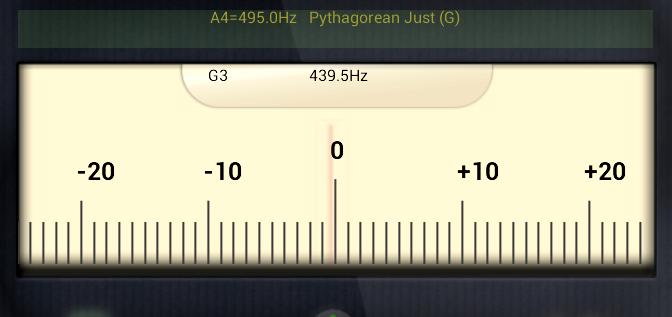In the early 1900s, the Belfast carpenter William Savage and his younger brother Robert made a very decorative copy of the medieval Brian Boru (Trinity College) harp. When the harp was finished, brass wire strings were fitted by George Jackson.
George Jackson had learned harp from Patrick Murney, in a lineage going back to the 18th century Irish harpers. I recently started to wonder if some of Jackson’s strings might still be on the harp.
Continue reading “…George Jackson when he was stringing my Harp…”